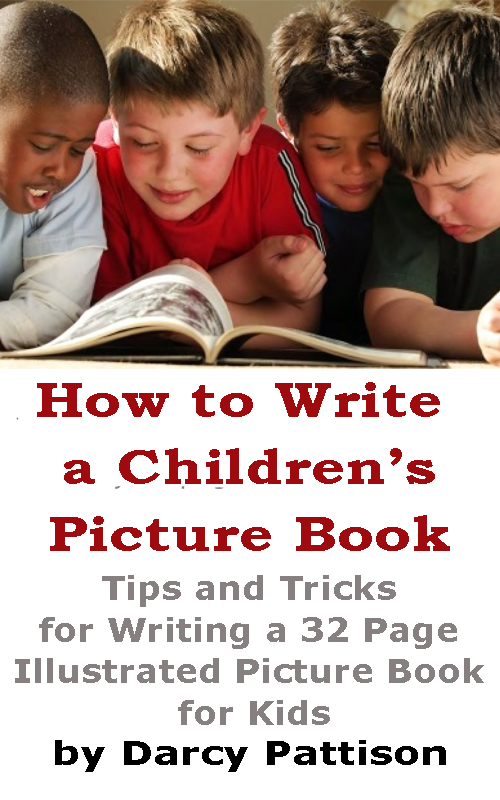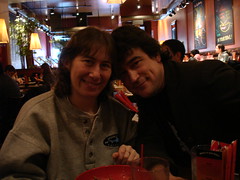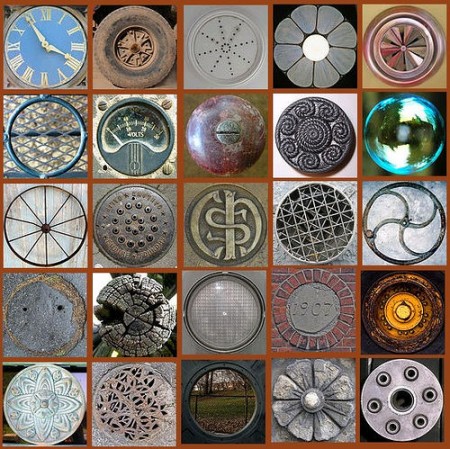
Truth be told, I'm still struggling in these parts, and hence the sluggishness of my blog presence. I do hope to regain my perky self (Was I ever perky? Is it even appropriate at my age to be perky?). But between now and then, I would like to share two news items (both from the New York Times) that friends have sent my way. My taste, my interests must be verging on the transparent. Story number one: Draft. This is the new Times Opinionator feature that promises "essays by grammarians, historians, linguists, journalists, novelists and others on the art of writing—from the comma to the tweet to the novel—and why a well-crafted sentence matters more than ever in the digital age." Jhumpa Lahiri's gorgeous piece "My Life's Sentences" recalled, for the ever-lovely Melissa Sarno, a piece I had written here, about my obsession with the construct. (Thank you, Melissa, for making me famous today.) Story number two: Your Brain on Fiction. This Annie Murphy Paul essay on reading and the effects it has on our brains reinforces what those of us who have defended lies and lie telling (well, we have defended novels) have been saying all along: "Reading great literature...enlarges and improves us as human beings." I personally think the "great" matters in that Annie Murphy Paul essay. Which takes me straight back to my obsession with crafting fine sentences. Not easy sentences. Not obvious ones. Not the ones you've seen plenty of times before. But the ones that make us think. Thank you, Melissa, Mandy, Paul, and Bonnie for making sure I see the good stuff. Thank you, Melissa, for pairing me with Jhumpa herself.
 The Great Wall was built one stone at a time; you climb it one step at a time; your story is written one word at at time. Slow and steady can create magnificence. (I am in the orange & white hat.)
I am stumped, not blocked. I know that something in my current writing project needs to change, I’m just not sure how to best accomplish it. It’s partly a matter of organization–this is a nonfiction project–making sure that everything is included, ideas flow logically. But as is so often, it’s not straightforward. I could go in a couple different directions.
I’m at the point where I probably need to commit to one structure, write a draft and get feedback. Sigh. The writing process needs that feedback loop. I will need to know how clear my ideas are and if someone can use this to accomplish something: will the information be helpful in this format?
As I write this draft then, I will keep my audience firmly in mind. Sometimes, I just write for the story or the ideas and don’t worry about the audience. But this draft is different. After a couple drafts, I know the material, so this draft is about communicating with clarity. Fiction gets to that point, too, when you know the story and the next draft is about clarity so the reader experiences the emotions of the story.
The first draft is almost always about finding the story or the idea. After that, the purposes of a draft of fiction is to find the most dramatic way to tell that story so it will impact readers emotionally. For nonfiction, the purpose of subsequent drafts is to find clarity and, if it’s creative nonfiction, to find that reader experience, too.
That’s where I am today–where are you in your writing process today?
 | |
NEW EBOOK
Available on
|
For more info, see writeapicturebook.com

During the Vietnam War the people of the US put enough pressure on Congress to lower the voting age to 18 because young men were being drafted at 18, fighting, dying for our country at 18. I know the drinking age was 18 in some states as well. I don't know if that was nationwide.
The voting age remained. The draft was abolished in favor of an all volunteer military. But during the Vietnam War, it was rare for people to do more than one tour. Now they do three or four. Our volunteer military goes way above and beyond the call of duty IMHO. But that is not my subject today.
Age is. We are an aging population in the US. I had many friends who went to the war I protested. I worked for the US Army Recruiting Main Station before I became a protester, so I witnessed literally hundreds of young men going off to war.
One thing that never occurred to me to protest was the age limits for holding office. This morning I read an article on this topic. John Seery is proposing an amendment to the US Constitution to lower the age requirements. I agree with him. Read his article and see what you think.
http://www.salon.com/news/politics/war_room/2011/06/26/john_seery_age/index.html?utm_source=twitterfeed&utm_medium=twitter

By: AlexM,
on 5/17/2011
Blog: OUPblog
( Login to Add to MyJacketFlap)
JacketFlap tags:
History, US, Religion, Vietnam War, Western Religion, protest, christian, baltimore, Martin Luther King, christianity, terrorism, 1960s, this day in history, draft, catholic, catholicism, knights of columbus, *Featured, Catonsville, catonsville nine, Mark Massa, napalm, selective service, berrigan, massa, Add a tag
The United States was plagued by social unrest throughout the 1960’s. 1968 stands out as the most militant and contentious year of the decade with the assassinations of Martin Luther King Jr. and Robert Kennedy. In that same year, the Selective Service office announced that its December quota for the draft would be the highest thus far, leading countless Americans to engage in acts of civil disobedience. American Catholics, who were led to accept mainstream cultural values and unhesitatingly support foreign policy faced a changing identity brought on by a remarkable act known as the Catonsville Nine. Led by two priests, the Catonsville Nine would set off a wave of other Catholic protests against the Vietnam War. The following excerpt from Mark Massa’s The American Catholic Revolution describes this transformative moment in American Catholic history.
At 12:30 on the afternoon of May 17, 1968, an unlikely crew of seven men and two women arrived at the Knights of Columbus Hall in Catonsville, Maryland, a tidy suburb of Baltimore. Their appearance at 1010 Frederick Road, however, was only tangentially related to the Knights. The target of their pilgrimage was Selective Service Board 33, housed on the second floor of the K. of C. Hall. The nondescript parcel they carried with them contained ten pounds of homemade napalm, whipped up several evenings before by Dean Pappas, a local physics teacher who had discovered the recipe in a booklet published by the U.S. Special Forces (two parts gasoline, one part Ivory Flakes). On entering the office, one of them explained calmly to the three surprised women typing and filing what was going to happen next. But either out of shock or because they hadn’t heard the announcement clearly the women continued about their business until the strangers began snatching up 1-A files, records of young men whose draft lottery numbers made them most likely to be drafted to fight in Vietnam. At that point one of the women working in the office began to scream.
The raiders began stuffing the 1-A files (and as many 2-As and 1-Ys as they could grab) into wire trash baskets they had brought for the purpose. When one of the office workers tried dialing the police, Mary Moylan, one of the nine intruders, put her finger on the receiver button, calmly advising the distraught worker to wait until the visitors were finished. The burning of the draft records was intended to be entirely nonviolent, although one of the office workers had to be physically restrained from stopping the protesters, in the course of which she suffered some scratches on her leg. With that one exception, the raid went according to plan. Indeed, as Daniel Berrigan, S.J. one of the leaders of the event, later remembered it.
We took the A-1 [sic] files, which of course were the most endangered of those being shipped off. And we got about 150 of those in our arms and went down the staircase to the parking lot. And they burned very smartly, having been doused in this horrible material. And it was all over in 10 or 15 minutes.
Once Berrigan and the others left the office, Moylan said to the office worker with the phone, “Now you can call whoever you wish.” But instead of calling the police she hurled it through the window, hoping to get attention of workmen outside the building, which she did: one of the workmen quickly rushed up to the office to see what the ruckus was. But his arrival on the scene came too late to interrupt the protest. A small group of reporters and photographers, as well as a TV crew, had already gathered, having been tipped off by a memb

By: Lauren,
on 7/9/2010
Blog: OUPblog
( Login to Add to MyJacketFlap)
JacketFlap tags:
Law, Technology, American History, A-Featured, library of congress, jefferson, draft, Declaration of Independence, Thomas Jefferson, Web of Language, Dennis Baron, A Better Pencil, university of illinois, Add a tag
Dennis Baron is Professor of English and Linguistics at the University of Illinois. His book, A Better Pencil: Readers, Writers, and the Digital Revolution, looks at the evolution of communication technology, from pencils to pixels. In this post, also posted on Baron’s personal blog The Web of Language, he explains how digital archaeology has revealed Thomas Jefferson’s revisions of the Declaration of Independence. Read his previous posts here.
 Jefferson on the two-dollar bill In a list of the colonies’ grievances against King George III Jefferson wrote, “he has incited treasonable insurrections of our fellow-subjects, with the allurements of forfeiture and confiscation of our property.” But the future president, whose image now graces the two-dollar bill, must have realized right away that “fellow-subjects” was the language of monarchy, not democracy, because “while the ink was still wet” Jefferson took out “subjects” and put in “citizens.”
In a eureka moment, a document expert at the Library of Congress examining the rough draft late at night suddenly noticed that there seemed to be something written under the word citizens. It was no Da Vinci code or treasure map, but Jefferson’s original wording, soon uncovered using a technique called “hyperspectral imaging,” a kind of digital archeology that lets us view the different layers of a text. The rough draft of the Declaration was digitally photographed using different wavelengths of the visible and invisible spectrum. Comparing and blending the different images revealed the word that Jefferson wrote, then rubbed out and wrote over.


Above: Jefferson’s rough draft reads, “he has incited treasonable insurrections of our fellow-citizens”; followed by a detail of “fellow-citizens” with underwriting visible in ordinary light. Below: a series of hyperspectral images made by the Library of Congress showing that Jefferson’s initial impulse was to write “fellow-subjects.” [Hi-res images of the rough draft are available at the Library of Congress website.] Elsewhere in the draft Jefferson doesn’t hesitate to cross out and squeeze words and even whole lines in as necessary, but in this case he manages to fit his emendation neatly into the same space as the word it replaces.
0 Comments on Revising Our Freedom as of 1/1/1900
When I was first learning about Writing Workshop, it was difficult for me to wrap my head around the process each student would be going through. I spent a lot of time thinking and re-thinking the writing process and the way it would become individualized. Going from idea to notebook to draft to publication seemed [...]

By: Darcy Pattison,
on 11/11/2009
Blog: Darcy Pattison's Revision Notes
( Login to Add to MyJacketFlap)
JacketFlap tags:
book, novel, revision, critic, article, critique, draft, how to write, project. social media, shorter, Add a tag
I’m waiting for critiques from four readers on the second draft of my novel. I know what I think needs work, and it will be interesting to see if the readers agree.
Meanwhile:
Between Drafts
 Despair v. Hope. I’m vacillating between hope and despair. My gut tells me this draft is a big improvement, but my inner critic is harsh. I don’t know if I should hide my head in shame or tall taller with pleasure in what I’ve done. Despair v. Hope. I’m vacillating between hope and despair. My gut tells me this draft is a big improvement, but my inner critic is harsh. I don’t know if I should hide my head in shame or tall taller with pleasure in what I’ve done.
Cleaning the office. Yes, that chore got done. Sorta. I’m doing neglected chores, like filing, updating my bio on various websites, planning holiday meals, and actually reading.
Shorter pieces. I’m working on some shorter pieces. I’ve had a nf article accepted by Highlights, I’m working on another short project, and I’m re-reading almost every failed picture mss in my files to see if I know how to fix any of them. I wrote a piece for our regional SCBWI newsletter. These aren’t time-wasters, but important things which just get muscled out of the way by the heftier novel. I’m glad to be playing with the chihuahuas for a change.
Preparing Emotionally for the Next Draft. I’m getting ready emotionally to “kill my darlings,” to give up my attachment to the current plot and form of the novel if needed, and to dig in and work hard.
Related posts: - Emotional Critiques
- Give Them a Sample


By: Darcy Pattison,
on 11/10/2009
Blog: Darcy Pattison's Revision Notes
( Login to Add to MyJacketFlap)
JacketFlap tags:
storytelling, story, book, fiction, novel, revision, draft, how to write, revis, Add a tag
Finding the Best Way to Tell a Story
First drafts are for finding out what story you are telling. Second and subsequent drafts are for finding the best way to tell that story.
I finished a second draft yesterday and someone asked what I concentrated on in that draft. Basically, refining the story and exploring options for telling it.
Specificially, I worked on these things:

Facts: I had several experts in child behavior read the mss and saw that there were several checks on the reality of my situations. I’m dealing with kids in foster care, so I had to look up state laws, read manuals for foster parents, etc. Then, replot with that in mind.
Plot: There were major plot holes that needed to be addressed. The climax of a major subplot had to be totally overhauled because of the factual corrections. Smaller plot holes had to be filled.
Transitions: Often there were abrupt changes from scene to scene, without enough details for the reader to follow when/where/what.
Character: Motivations were unclear. I added more internal thoughts, backstory, and discussion of events. It’s a delicate balance to keep the story moving, yet make it clear. This draft, I concentrated on making it clear. If my readers want me to be more delicate on the next draft, I can do that.
Villain: The villain was too cut and dried and needed some softening.
Voice: OK, I’m doing that hard thing of alternating voices. So, I had to make each voice distinctive and stay consistent within each voice. I’m sure there’s more to do here with consistency, but this is a good start.
Setting: There’s still some work to do on portraying this specific school and community, but it’s pretty good now.
Clarity: Above all, I tried to get the story out of my head and onto paper with more exactness and completeness.
So, the first draft blocked in the major elements, this draft refined them. I’ll need at least one more draft to refine and to add highlights.
Plan for Third Draft
Specifically, I want to work on consistent voice, refining the language, clearing up any remaining plot problems, keeping a balance of action and internal motivations, making sure Darcy-the-author stays out of the story and the kids are really kids, cutting about 10,000 words (It’s about 60,000 right now and I think 50,000 would be better), and keeping the pace taut.
I already want to start on the consistency of the voice, but I think I’ll try to wait a couple days, so I have fresher eyes. But I won’t let a lot of time pass, or I’ll lose momentum, especially with the holidays.
Related posts: - 4 Ways Weather Affects Your Story
- Voice Trumps Everything
- Outline scenes


Here's a first draft of some ideas from the beginning of my graphic novel. It's quite different from this but you have to start somewhere. Check out my blog from time to time to see postings from the GN!
http://mikecressy.blogspot.com/

By: Marc,
on 5/6/2009
Blog: OUPblog
( Login to Add to MyJacketFlap)
JacketFlap tags:
Reference, A-Featured, Oxford Etymologist, Lexicography, Dictionaries, American, English, British, draft, phonetics, British English, American English, draught, English phonetics, Add a tag

By Anatoly Liberman
It is rather odd that laughter and daughter do not rhyme, while cough and doff do. No one is surprised (after all, have and behave do not rhyme either, while live can rhyme with five or with give; anything is possible in written English), but it is still odd. As always, our spelling reflects the pronunciation of long ago. Once upon a time (that is, in Middle English), to begin at the beginning, words like ought had the diphthong we today hear in note, whereas aught had the diphthong of Audi. The digraph gh had the value of ch in Scots loch. Then the diphthongs merged; hence the homophones ought (ought to) and aught (for aught I know) in present day English. (Vowels constantly merge or split into two, and the ever-active kaleidoscope puzzles both historical linguists and the uninitiated, but there is some logic in this merry-go-round, even though it is often hard to detect.) The most enigmatic change occurred to the consonant designated by gh. It appears to have been torn between the opposing forces: while one made the consonant weak, the other strengthened it. For example, the word enough, whose graphic shape is an accurate transcript of its medieval pronunciation, has come down to us in two forms: one (archaic) is enow (rhyming with now), the other (which everybody uses) is pronounced as enuf. Likewise, Modern English has preserved slough “the skin of a snake,” that is, sluf, and slough “bog,” as in The Slough of Despond, rhyming with enow, cited above. The family name Slough is a homophone of slough “bog.”
Some time in the 15th century, the tug of war between the weak and the strong variant (au ~ ou versus f) began, as evidenced, among others, by the spellings broft “brought” and abought “about” (abought must have been born of utter confusion: so many words with au and ou had gh in the middle that inserting gh where it had never been pronounced looked like a reasonable procedure). But a particularly interesting case is the history of the word daughter. In 17th century private letters, daughter appears in the forms dater, dafter and daufter; daufter, which also turned up in the 18th century, probably reflects a mixed pronunciation, a hybrid of competing variants. The phonetic descriptions going back to that time contain statement like: “Some say f [in daughter]” and “Most of us pronounce dafter.” The same authorities testify that bought, naught, and taught often had f before t. The merger of au and ou was in progress in the 17th and even 18th century: ought could be pronounced like aft in Modern British English or without f but with the same vowel. Sought tended to be a homophone of soft. Henry Fielding (1701-1754) and Smollett (1721-1771), the latter the favorite author of the young Dickens, wrote soft and thoft for sought and thought when they reproduced the speech of people from the countryside. The poets of the Elizabethan epoch rhymed thought and aloft, caught and shaft, manslaughter and after. Shakespeare also rhymed daughter with after (and with slaughter). As late as 1764, the great lexicographer Samuel Johnson attested to the variant druft for drought. The form dafter stayed in many British dialects, for example, in the north and in East Anglia.
The word draught had a similar history. Its etymology is transparent. “Draught” is an act of drawing or that which is drawn. The meaning “design, plan” was preceded by “picture, sketch” (from draw “to describe a line”). The game known as checkers in American English is called draughts in Britain (draught meant “move,” so that draughts can be glossed as “moves,” whereas checkers refers to the “checkered” shape of the board.). The inner form of draught is more obvious than its origin. This noun was borrowed from Scandinavian (probably in the 12th century) and later reinforced by its Middle Dutch synonym dragt. Draft existed at one time as another pronunciation of draught; the form surfaced only in the 18th century. In Standard Modern English, draught is never homophonous with drought, but different spellings have been used to differentiate meanings. While American English banished draught and replaced it by draft in all senses, British English distinguishes between them. Thus, we find a beast of draught (a phrase of the same structure as a beast of burden and a beast of prey) and a draught horse; a draught of water (as well as a draught of pain), and susceptible to draughts. But in both countries, if people are anti-draft, their resentment has nothing to do with a current of air. A banking term is also draft everywhere. When a verb was formed from this noun, naturally, the later form became its basis; hence to draft. A much longer and more precise essay could be written on the subject, but for starters a rough draft will probably suffice.
Corollary: some people are daft, and others are still dafter.
 Anatoly Liberman is the author of Word Origins…And How We Know Them as well as An Analytic Dictionary of English Etymology: An Introduction. His column on word origins, The Oxford Etymologist, appears here, each Wednesday. Send your etymology question to [email protected]; he’ll do his best to avoid responding with “origin unknown.”


By: Steve Novak,
on 12/8/2008
Blog: Steve Draws Stuff
( Login to Add to MyJacketFlap)
JacketFlap tags:
progress, image, dark, cover, sword, sky, prince, draft, first, forts, tommy, more, Add a tag

By: Steve Novak,
on 10/29/2008
Blog: Steve Draws Stuff
( Login to Add to MyJacketFlap)
JacketFlap tags:
weekend, busy, book, father, characters, year, cover, done, end, draft, figures, forts, crap, annoyed, Add a tag

I dislike busy weeks, I really do, and the last couple have been among the busiest in quite some time. The good news is that I have dedicated myself to finishing a first draft of my novel before the year ends.
Can I do it? Yes.
Will I do it? That remains to be seen.
I've reached the climax of the story and I can see the end in sight, the problem is simply finding time to write these days. Overall I think it's a pretty solid first draft thus far. It's basically a fantasy story about some kids who end up in another world (which has been done a billion times) but I think how they get there, and what happens when they do are both different and interesting. While it's fantasy, at the same time it's a story about terrible father figures, family, fate, and faith (which is a bit strange seeing as I am by no means whatsoever a religious man) so it works on a few different levels.
Or maybe it doesn't, I don't know. Maybe it's total crap.
Anyway, crap or no crap I'm going to finish the thing before January 1st rolls around.
The sketch above is a very rough sort of outline of a possible book cover. (Really just an excuse to draw some of the characters.)
After all of the writer’s notebook work and the storyboard work and the oral storytelling, it sometimes seems as though students don’t realize how they then need to craft their draft. I’ve found that explicit teaching of this idea is important.
Today I did just that with some third graders. I showed them my storyboard and [...]

By: Rebecca,
on 4/14/2008
Blog: OUPblog
( Login to Add to MyJacketFlap)
JacketFlap tags:
writer, travel, Literature, Education, writers, oupblog, Prose, vsi, Kevin Hayes, very short introduction, exams, drafted, studying, draft, chapter, belletristic, Add a tag
Author Kevin J. Hayes has been very busy writing American Literature: A Very Short Introduction, but he needs your help. Find out what you can do below.
When I was studying for my exams at the University of Delaware, I found little books about big subjects to be the most useful study aids. Despite the usefulness and convenience of these little books, I still resented the time studying took. I was eager to finish my degree and start my career, to stop reading the work of others and start writing work of my own. As part of the studying process, I drafted a brief history of American literature. After passing all my exams, I realized my draft history had been a way to force myself to keep studying. I set it aside without a second thought, graduated, and moved to Oklahoma. The draft history disappeared along the way.
Upon completing my forthcoming biography, The Road to Monticello: The Life and Mind of Thomas Jefferson, I wanted to work on a tiny little book next, so I started writing American Literature: A Very Short Introduction. The book will consist of eight chapters and will be organized in a rough chronological manner. Each chapter will concentrate on a particular literary genre and will have a central focus, too. For example, Chapter 7, the first chapter I drafted, presents an overview of the novel refracted through the idea of the “great American novel.”
I’m working on Chapter 2 now. It will trace the story of American travel writing from colonial times through the twentieth century. Though travel writing constitutes some of the best writing in the colonial American period (see Daniel Royot’s fine chapter in the recent Oxford Handbook to Early American Literature), literary histories have typically slighted subsequent travel writings in favor of belletristic literature. Deciding which travel writers to include has proven to be more difficult than I initially anticipated. I need help. Obviously, I do not have room to discuss too many travel narratives in such a short book. Here’s my question: which travel writers should I include?
ShareThis
 Erik and Jaap, the guys from the Delft Public Library who visited the Chicago area in February to talk with librarians about gaming, are coming back this month on a nationwide tour to explore innovation in U.S. libraries. Yes, a nationwide tour. Only these two could pull off something this ambitious. They’ll be driving cross-country on their way to the Internet Librarian conference in California at the end of October, stopping at the following libraries along the way: Erik and Jaap, the guys from the Delft Public Library who visited the Chicago area in February to talk with librarians about gaming, are coming back this month on a nationwide tour to explore innovation in U.S. libraries. Yes, a nationwide tour. Only these two could pull off something this ambitious. They’ll be driving cross-country on their way to the Internet Librarian conference in California at the end of October, stopping at the following libraries along the way:
- New York Public Library
- Darien Library
- Public Library of Charlotte Mecklenburg County
- Ann Arbor District Library
- Mortenson Center
- Council Bluffs Public Library
- Denver Public Library
- Salt Lake City Library
They’ll be talking with librarians, interviewing them on camera, shooting video of services, driving westward, participating in the annual “gadgets” presentation at the IL conference, and then heading home to create another great documentary (like the one they did for their first trip). They’ll be in the Chicago area around October 20-21, and I can’t wait to see them again. If nothing else, we will definitely have another video game night. 
If you’re on or near their route, consider contacting and getting together with them - I guarantee you won’t regret it. Their enthusiasm and creativity is infectious. I mean really, who else do you know who could get funding for such a big idea as this?
 When Erik first drew up the plan on a napkin in February, I loved the idea of librarians as “shanachies.” Their theme is “Keep stories, tell stories, make stories.” When Erik first drew up the plan on a napkin in February, I loved the idea of librarians as “shanachies.” Their theme is “Keep stories, tell stories, make stories.”
“Originally the shanachie in Ireland was a very important person who in rank came after the chief and the druid carried the gift of keeping and telling the stories. They travelled the country and were given free lodges and food in return for stories. The gift was passed on when the Shanachie died.”
More info is available on the official Shanachie Tour site. They’ll be posting a video diary there as the trip progresses. I can’t wait to watch what they do next!
delft public library, dutch, erik, jaap, shanachie, shanachie tour, telling stories
|
 In HACKED, the book published by Piccadilly Press yesterday, I casually mentioned, somewhere near the end, that the shadowy figure from the deep web responsible for the almost-tragedy was an eighteen-year old girl whose mother was Welsh and her father Yemeni. It was a whim, in that I could have picked anywhere that the US fly armed drones, so Pakistan, Somalia, Afghanistan, and any European country, as she needed to be of dual heritage.
In HACKED, the book published by Piccadilly Press yesterday, I casually mentioned, somewhere near the end, that the shadowy figure from the deep web responsible for the almost-tragedy was an eighteen-year old girl whose mother was Welsh and her father Yemeni. It was a whim, in that I could have picked anywhere that the US fly armed drones, so Pakistan, Somalia, Afghanistan, and any European country, as she needed to be of dual heritage.















 Despair v. Hope. I’m vacillating between hope and despair. My gut tells me this draft is a big improvement, but my inner critic is harsh. I don’t know if I should hide my head in shame or tall taller with pleasure in what I’ve done.
Despair v. Hope. I’m vacillating between hope and despair. My gut tells me this draft is a big improvement, but my inner critic is harsh. I don’t know if I should hide my head in shame or tall taller with pleasure in what I’ve done.









That picture is amazing.
Thanks so much for sharing...I'm going to check out the NYTimes article.
I love the photo as well.
It isn't that you are transparent as much as knowing your "obsession with crafting fine sentences" that made me think of you when I read the NYT article.
I associate you with Jhumpa Lahiri for many reasons. Mostly because you both craft beautiful sentences and know how to move plot forward. In my opinion, that combination is a rare and wonderful thing.
I, too, loved Melissa's comparison of you and Jhumpa. Both of you write books that are meant to be savoured. :)
I love that brain on fiction piece and meant to blog about it but have been too busy this week preparing talks to properly do it. I'm so glad you brought it up.